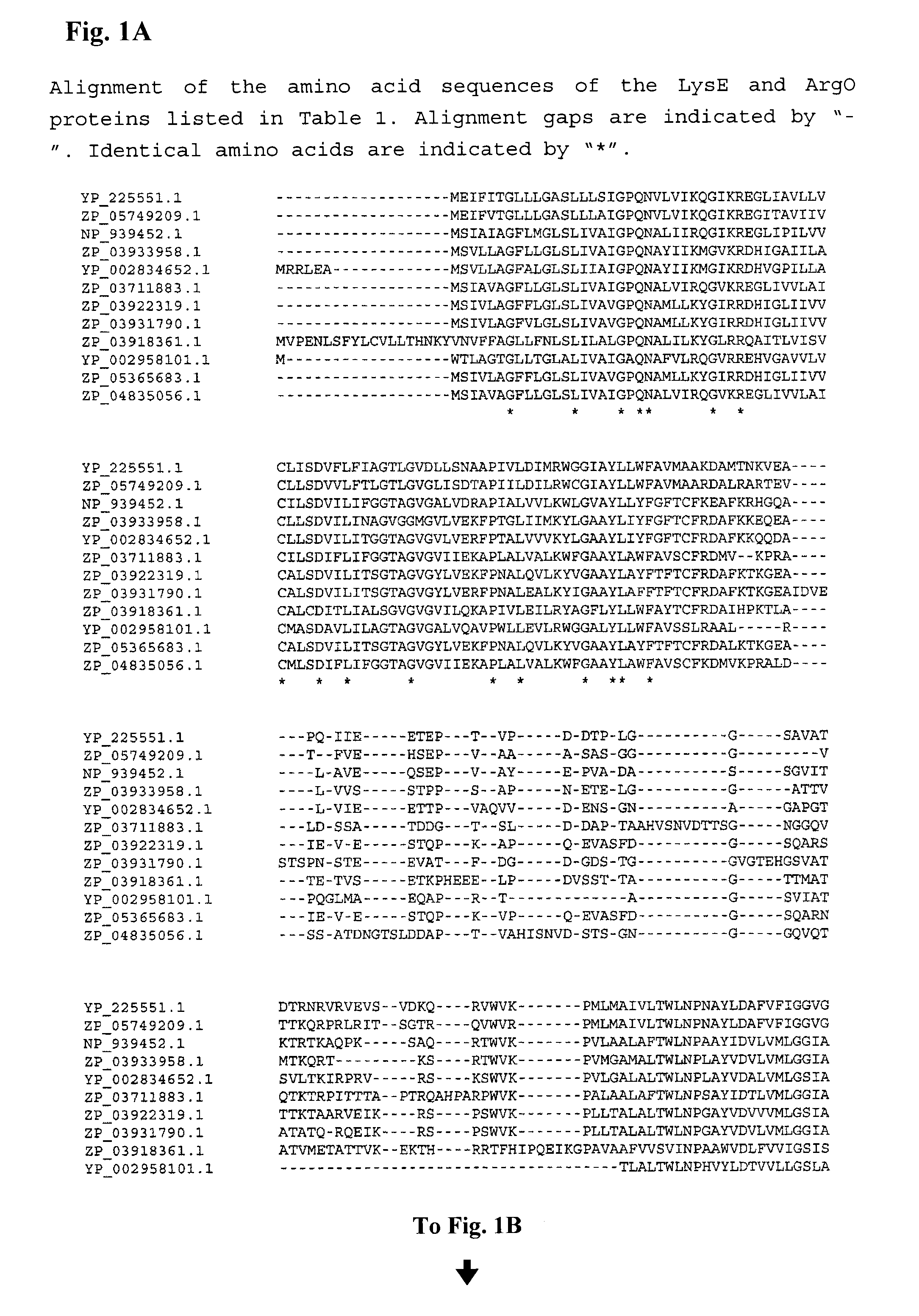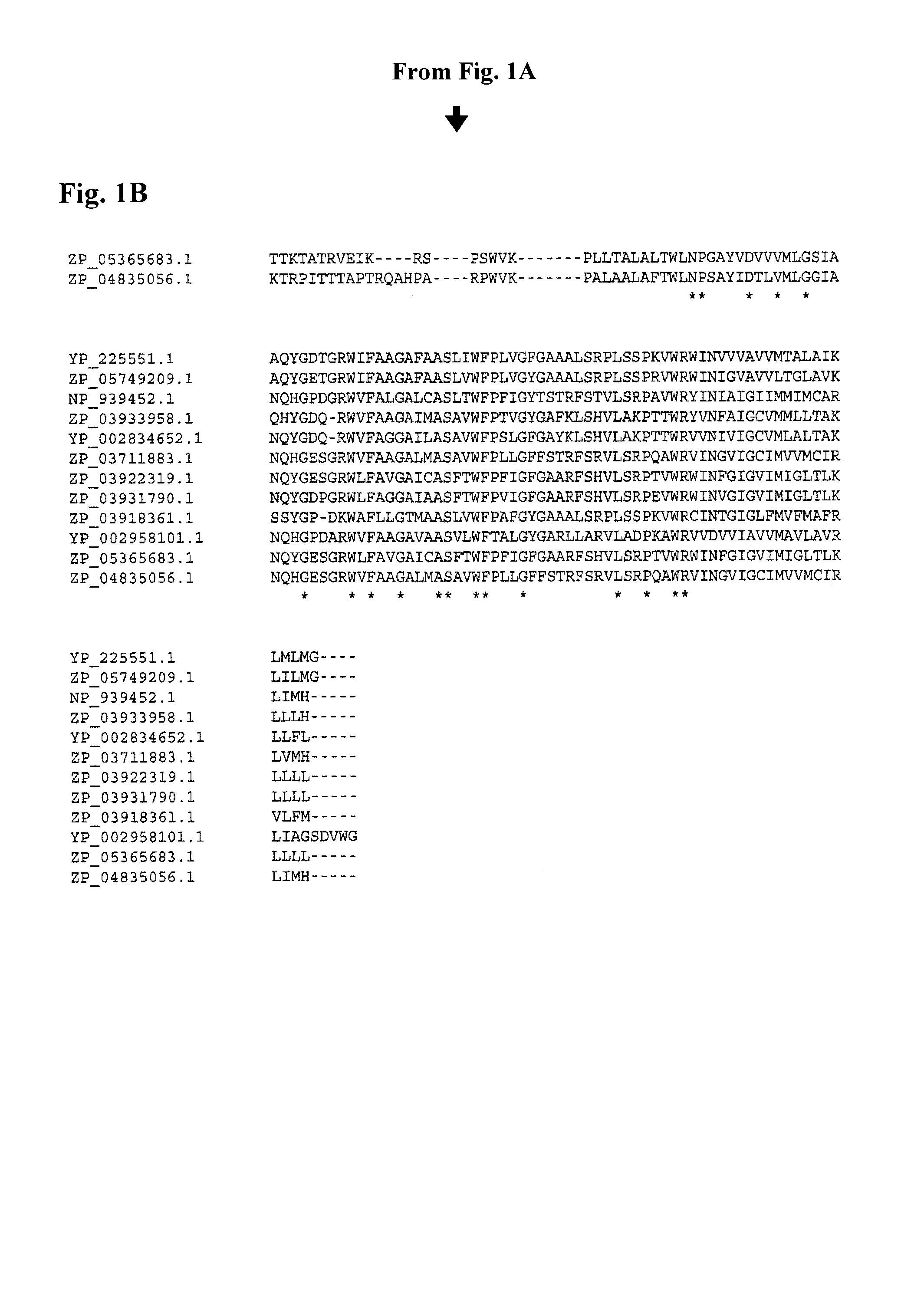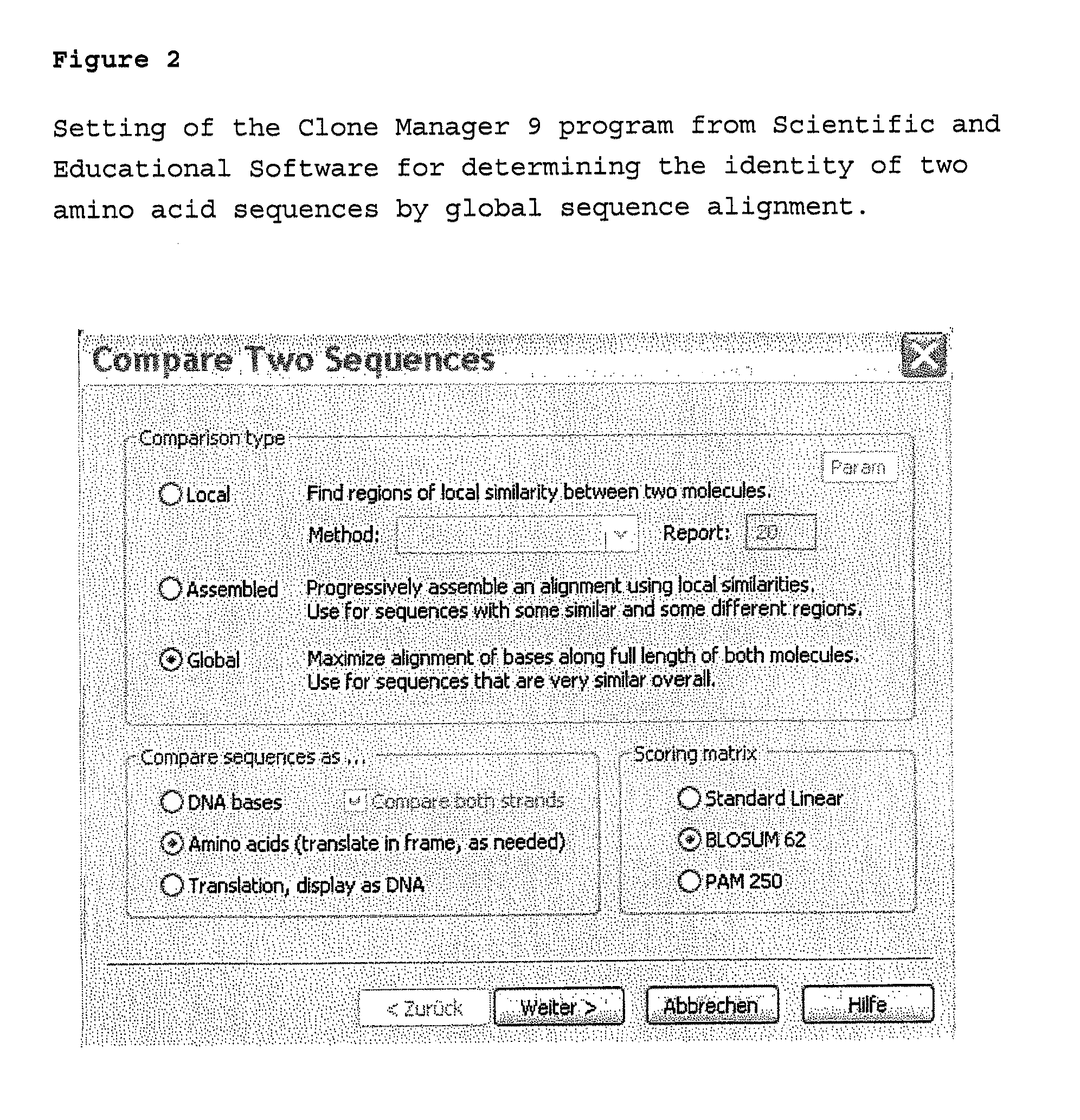Process for the fermentative preparation of L-ornithine
a technology of l-ornithine and fermentative preparation, which is applied in the field of process for the fermentative preparation of l-ornithine and microorganisms, can solve the problems of poor release of basic amino acids such as l-lysine, l-arginine and l-ornithine by passive diffusion from the cell, and achieves no effect of increasing the rate of l-ornithine expor
- Summary
- Abstract
- Description
- Claims
- Application Information
AI Technical Summary
Benefits of technology
Problems solved by technology
Method used
Image
Examples
example 1
Cloning and Sequencing of the lysE Gene from Corynebacterium glutamicum ATCC 13032
[0202]The lysE gene of strain ATCC13032 was cloned into the E. coli / C. glutamicum shuttle and expression vector pVWEx1 (Peters-Wendisch et al., J. Mol. Microbiol. Biotechnol. (2001) 3(2): 295-300).
[0203]Cloning was carried out in two steps. First, a polymerase chain reaction (PCR) amplified the gene from Corynebacterium glutamicum ATCC13032 by means of the following oligonucleotide primers derived from SEQ ID No. 1. Said oligonucleotides included additional restriction cleavage sites on their 5′ end (underlined: EcoRV for lysE—1.p and AvrII or SspI for lysE—2.p).
[0204]
(see SEQ ID No. 22)lysE_1.p: 5′-[TCGATATCATGGAAATCTTCATTACAGG]-3′(see SEQ ID No. 23)lysE_2.p: 5′-[TGCCTAGGTCAATATTTGGGCGAAGGCCACCG]-3′
[0205]The PCR reaction was carried out in the presence of 200 μM deoxynucleoside triphosphates (dATP, dCTP, dGTP, dTTP), 0.5 μM each of the corresponding oligonucleotide, 100 ng of Corynebacterium glutamicu...
example 2
Construction of the Vector pK18mobsacB_DargFRGH for Deletion of the argFRGH Region in Corynebacterium glutamicum
[0213]To this end, firstly chromosomal DNA was isolated from C. glutamicum ATCC13032 by the method of Tauch et al. (1995, Plasmid 33: 168-179). The oligonucleotides listed below were selected on the basis of the sequence of the C. glutamicum argFRGH genes in order to prepare the argFRGH deletion construct. Said deletion construct was generated with the aid of the polymerase chain reaction (PCR), more specifically by the gene SOEing method (Gene Splicing by Overlap Extension, Horton, Molecular Biotechnology 3: 93-98 (1995)).
[0214]
argFRGH_d1:(see SEQ ID No. 24)5′-GGT GGT GCT AGC CCG GCG ATT TCT TTG CAC AT-3′argFRGH_d2:(see SEQ ID No. 25)5′-AAT GCT TAT CGA CGT ACC CCC CTG TGG TTG TGA AGTCAT A-3′argFRGH_d3:(see SEQ ID No. 26)5′-GGG GTA CGT CGA TAA GCA TT-3′argFRGH_d4:(see SEQ ID No. 27)5′-GGT GGT ATG CAT GGT GAT GGT TCC GAA TGT TG-3′
[0215]The oligonucleotide primers depicted ...
example 3
Preparation of the Strain Corynebacterium glutamicum ATCC 13032_DargFRGH
[0220]The vector mentioned in Example 2, pK18mobsacB_DargFRGH, was transferred by means of conjugation according to a protocol by Schäfer et al. (Journal of Microbiology 172: 1663-1666 (1990)) into the Corynebacterium glutamicum strain ATCC13032. For this purpose, the vector had previously been transformed into the E. coli strain S17-1 (Simon et al., Biotechnology 1: 784-791). The vector in S17-1 was assayed for identity similarly to detection in E. coli DH5alpha (see Example 2).
[0221]The vectors pK18mobsacB and pK18mobsacB_DargFRGH cannot self-replicate in C. glutamicum ATCC13032 and remain in the cell only if they have integrated into the chromosome following a recombination event. Clones with integrated pK18mobsacB_DargFRGH are selected by plating out the conjugation mix on LB agar (Sambrook et al., Molecular Cloning: A Laboratory Manual, 2nd Ed., Cold Spring Harbor, N.Y., 1989) supplemented with 15 mg / l kana...
PUM
| Property | Measurement | Unit |
|---|---|---|
| temperature | aaaaa | aaaaa |
| temperature | aaaaa | aaaaa |
| temperature | aaaaa | aaaaa |
Abstract
Description
Claims
Application Information
 Login to View More
Login to View More - R&D
- Intellectual Property
- Life Sciences
- Materials
- Tech Scout
- Unparalleled Data Quality
- Higher Quality Content
- 60% Fewer Hallucinations
Browse by: Latest US Patents, China's latest patents, Technical Efficacy Thesaurus, Application Domain, Technology Topic, Popular Technical Reports.
© 2025 PatSnap. All rights reserved.Legal|Privacy policy|Modern Slavery Act Transparency Statement|Sitemap|About US| Contact US: help@patsnap.com



